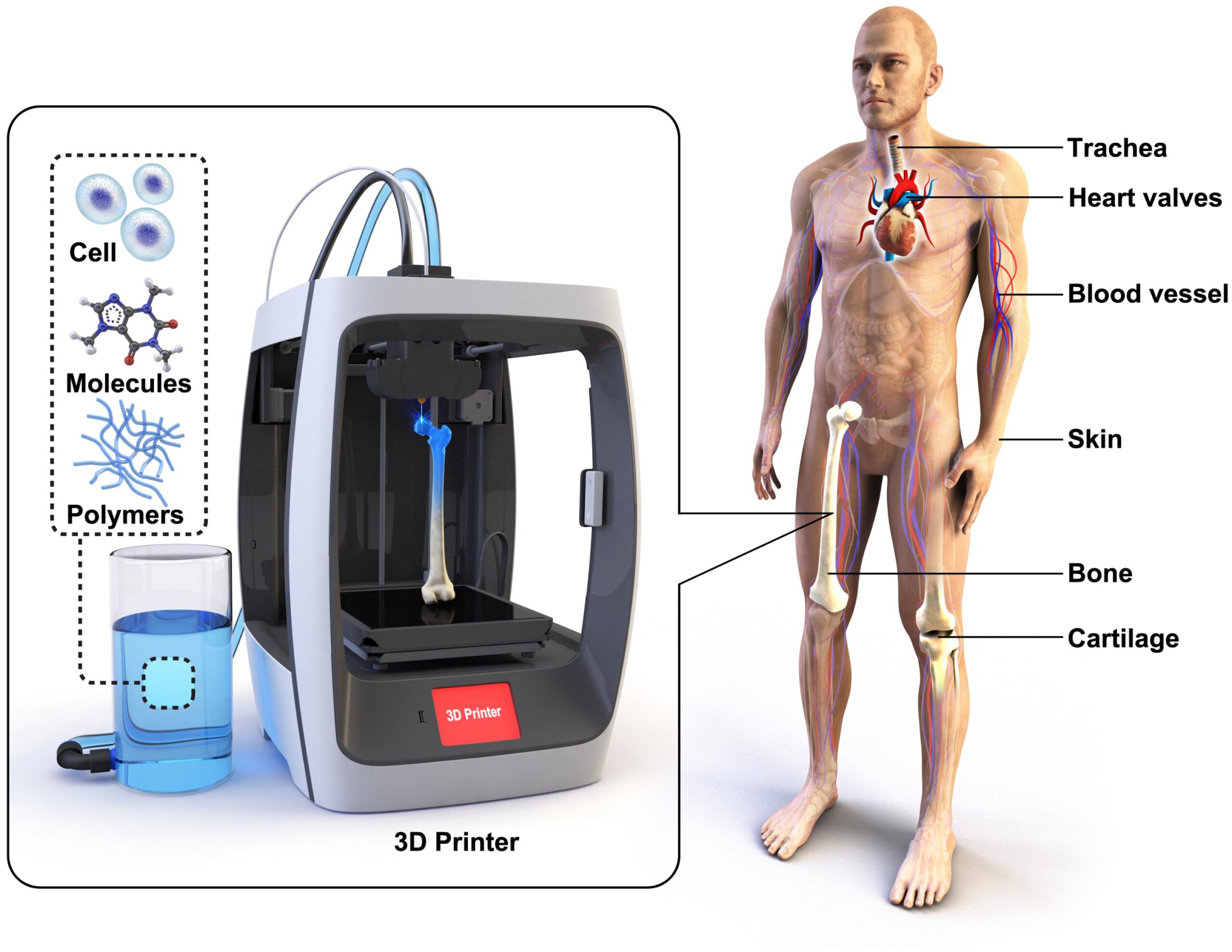
Key differences between tissue engineering and 3D bioprinting
Tissue engineering and 3D bioprinting are distinct but related fields sharing the common goal of creating functional and living tissues.
This article differentiates how tissue engineering and 3D bioprinting are different from each other:
Definition
Tissue Engineering: Tissue engineering is a multidisciplinary field focusing on combining cells, biomaterials, and growth factors to develop functional tissue constructs that can replace or repair damaged tissues in the body (1).
3D Bioprinting: 3D bioprinting is a specific technique within tissue engineering in which a bioprinter follows a computer-aided design (CAD) model to print the desired shape and organization of cells and biomaterials.
Complexity
Tissue Engineering: Traditional tissue engineering techniques may have limited precision in controlling the placement of cells and materials. Tissue constructs can be created, but they might lack the intricate microarchitecture and organization found in native tissues (2).
3D Bioprinting: 3D bioprinting offers higher precision, enabling researchers to recreate tissues that more closely resemble their native counterparts (3).
Applications
Tissue Engineering: Tissue engineering can involve cell therapy, scaffold-based approaches, decellularization and recellularization, and more (4).
3D Bioprinting: 3D bioprinting’s primary application is the fabrication of tissue constructs with controlled architecture and cell organization. These constructs can be used for tissue replacement, drug screening, regenerative medicine, and personalized tissue engineering that enables the precise spatial arrangement of cells and biomaterials to build complex tissue constructs (5).
References
1. Han F, Wang J, Ding L, Hu Y, Li W, Yuan Z, Guo Q, Zhu C, Yu L, Wang H, Zhao Z, Jia L, Li J, Yu Y, Zhang W, Chu G, Chen S, Li B. Tissue Engineering and Regenerative Medicine: Achievements, Future, and Sustainability in Asia. Front Bioeng Biotechnol. 2020 Mar 24;8:83. doi: 10.3389/fbioe.2020.00083. PMID: 32266221; PMCID: PMC7105900.
2. Howard D, Buttery LD, Shakesheff KM, Roberts SJ. Tissue engineering: strategies, stem cells and scaffolds. J Anat. 2008 Jul;213(1):66-72. doi: 10.1111/j.1469-7580.2008.00878.x. Epub 2008 Apr 15. PMID: 18422523; PMCID: PMC2475566.
3. Kačarević ŽP, Rider PM, Alkildani S, Retnasingh S, Smeets R, Jung O, Ivanišević Z, Barbeck M. An Introduction to 3D Bioprinting: Possibilities, Challenges and Future Aspects. Materials (Basel). 2018 Nov 6;11(11):2199. doi: 10.3390/ma11112199. PMID: 30404222; PMCID: PMC6266989.
4. Goldenberg D, McLaughlin C, Koduru SV, Ravnic DJ. Regenerative Engineering: Current Applications and Future Perspectives. Front Surg. 2021 Nov 3;8:731031. doi: 10.3389/fsurg.2021.731031. PMID: 34805257; PMCID: PMC8595140.
5. Papaioannou TG, Manolesou D, Dimakakos E, Tsoucalas G, Vavuranakis M, Tousoulis D. 3D Bioprinting Methods and Techniques: Applications on Artificial Blood Vessel Fabrication. Acta Cardiol Sin. 2019 May;35(3):284-289. doi: 10.6515/ACS.201905_35(3).20181115A. PMID: 31249458; PMCID: PMC6533576.



